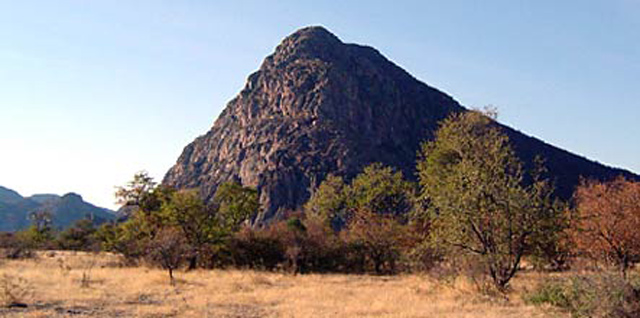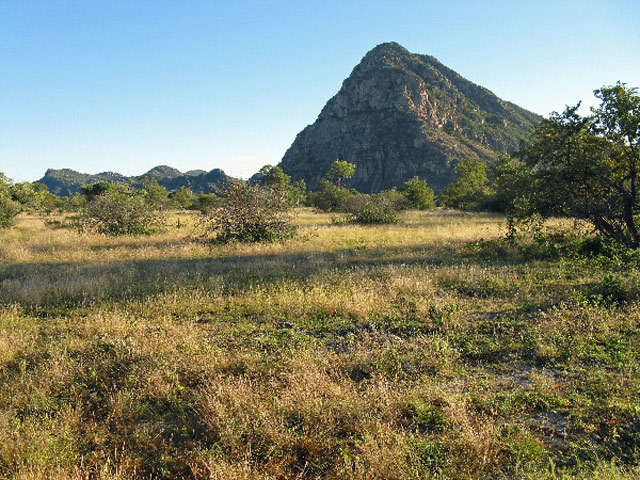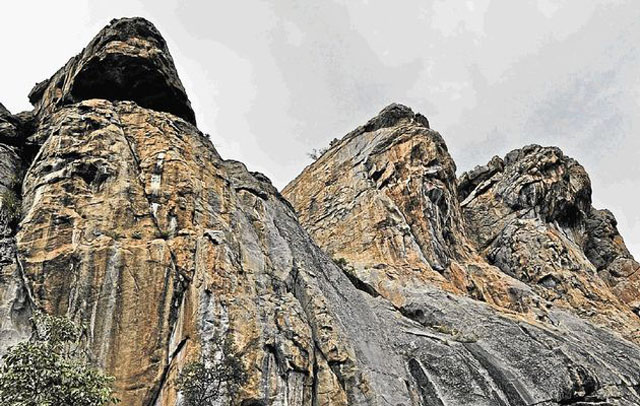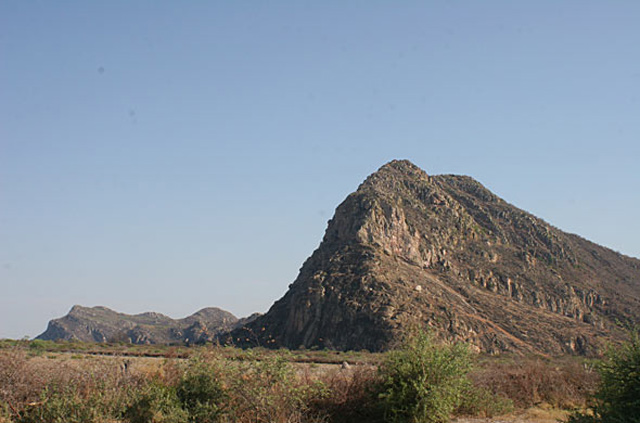Art stone cave at Tsodilo hill
Unesco's Scientific, Educational and Cultural Organization has recognized the Art Stone Cave at Botswana's Tsodilo Hill as a World Cultural Heritage in 2001.

Tsodilo is located in northwest Botswana near the Namibia border of Okavango Sub district.Tsodilo Hills is actually an area of 10 km2 including many caves, sand dunes and a fossil reservoir. Although there are sand dunes and lakes, this place is divided into 4 hills with the official name of Man Hill, Woman Hill and Children's Hill , a hill without name.

However, the most remarkable thing here is more than 4,500 pictures of stone paintings - authentic evidence describing human work and living scenes thousands of years ago. According to research results, archaeologists believe that more than 4,000 paintings here date back at least 100,000 years ago. The local community who live in this area used it as a place to hold ceremonies, worship their ancestors.

With a large number of rock paintings, (arguably the most in the world), Tsodilo is also considered an art museum called " Louvre of the Desert ". The sediments here show that worship activities have been taking place since the Stone Age until the 19th century. In addition to important evidence of worship rituals from the time of stone quiz and thousands of works Stone art, the area of Tsodilo hill also gives scientists many explanations about the ecological environment here as well as the interaction of the environment with people throughout thousands of years of history.

Residents living around the Tsodilo hills are mainly Hambukushu and San communities, who so far respect this area as a home for their ancestral spirits . Each hill, cave, lake here with the Hambukushu and San communities is very sacred. For scientists, the rock art works at Tsodilo hill are special works of art not only for its artistry but also because it can undergo the harshness of the Kalahari desert in millions. year. This makes one curious about the materials that prehistoric people created to paint these works. How can they spend millions of years, despite the wind and rain, the changing weather and the extreme climate of the desert?




Most of the rock art works at Tsodilo hill are bright red. Scientists believe that the ancients had mixed ocher with some resin to paint. Over 4,500 artworks here are not the same age, there are works up to 2,000 years old but there are also works that are only about 200 years old. The theme of stone art works on Tsodilo hill also varies from animals, animals to geometry and people. In terms of form and content, the art works at Tsodilo Hill have many things in common with paintings from ancient times in Zambia, Angolo, Namibia, Zimbabwe and South Africa.

The oldest drawings are primitive , simple geometric figures dating back more than 2,000 years. Pictures of animals and animals were born in the period from 600 to 1,200 years ago. More complex geometries follow scientists about 1,000 years ago. Stone paintings of cattle raised in the area's community have only been around since the 6th century and images of humans must be in the 18th and 19th centuries.

Art stone cave at Tsodilo hill is recognized by Unesco according to criteria (i), (iii), (vi)
Criterion (i): The rocky outcrops of rock art at Tsodilo hill have spent thousands of years in the harsh climate of the Kalahari desert but still in a state of relatively intact and Good preservation.
Criterion (iii): The artistic stone cave at Tsodilo hill is evidence of religious activities, ancestor worship of Hambukushu and San communities for many millennia.
Criterion (iv): It is not only the artworks of prehistoric people and Hambukushu and San communities for a long time. The stone paintings at Tsodilo hill also have a great meaning because it helps scientists have a panoramic view of the environment, the interaction between people and the environment over the centuries.
- The oldest stone masks in the world
- Longmen Stone Cave - World Cultural Heritage in China
- Van Cuong stone cave
- Macao stone cave - China
- Detecting traces of people near Con Moong cave
- Revealing techniques for manufacturing ancient weapons from 77,000 years ago
- The mystery of the 'strange' hill: Where the car shuts down still up the slope
- The location for drawing stone paintings is chosen based on music
- Many discoveries at the archaeological site of Con Moong cave
- Scary people into the giant cave, the hiding place of the pythons in Son La
- Discovering vestiges of caverns in Tuyen Quang
- Famous caves in the world
 Suzhou classic bonsai garden - China
Suzhou classic bonsai garden - China Chau Nguyen Dynasty
Chau Nguyen Dynasty Thai Son Mountain - World Wonder
Thai Son Mountain - World Wonder Ancient villages of Shirakawa-go and Gokayama
Ancient villages of Shirakawa-go and Gokayama